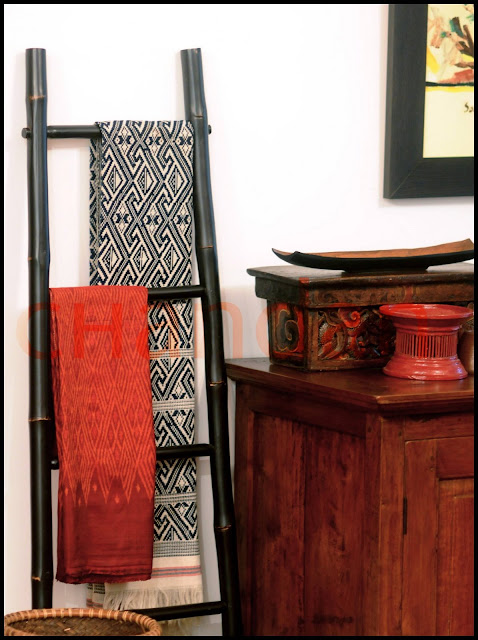
Posting first on a series on traditional weaves from Asia.
Traditional textiles are among the most exciting and sought after categories of traditional art from around the region.
There is much to offer- a profusion of techniques, fabrics, raw materials, motifs, patterns and applications.
Most traditional weaves are durable, and lend themselves to excellent use around the modern home. Decorating with kaleidoscopic colours of indigenous textiles rich in texture and imagery is rewarding not only for the visual appeal it generates, but for the fact that it helps sustain age old craft traditions and low-income rural economies.
Featured today are a few weaves from Indonesia. The archipelago's various people have age old weaving traditions. Most weaving is carried out by men and women at home using back-strap looms of varying complexity

Among the noted weaves from different Indonesian islands are the Balinese Songket and Rangrang, West Timorese and Sumbanese Pahikung, West Timorese Buna and the exceptional Ikat. Ikat derives its name from the Malay word Meningkat which means to tie or bind. Originally introduced to the archipelago from India, by the British East India Company, the tradition dates back to 700 A.D.
It is a complex weave in which the warp and weft threads are dyed separately before each cloth is woven . The typical, blurry outlined patterns that distinguish the end product only begins to emerge when the individually dyed warp and weft threads are woven together. The skill behind the process lies in the ability to work out before hand where the dyed sections will intersect and what patterns they will create. In Tengenan, Bali, weavers tie and dye the same pattern on both the warp and weft, a technique called double Ikat.
For the fact that they used very basic raw materials, like bark and fronds, Ikats from Indonesia display ingenious creativity.
Used traditionally to weave lengths of fabrics for a variety of uses- royal and ceremonial regalia, sarongs and hinnggyi's and other items of clothing- Ikat has always been considered a powerful medium to tell stories, preserve memories, provide people with their indigenous identities and to work magic. In various parts of Indonesia, exceptionally woven pieces with intricate patterns were said to process magical powers and were used as talismans for luck and protection.
The weave is s replete with motifs like conch shells, birds, fishes, flowers, animal and human figures. Expressive and very dramatic figures representing deamons and other mythological characters also abound.
Indonesian Ikat also comes in a veritable feast of colours, Sumbanese rusty reds and deep blues in bold patterns. In rainbow stripes from Timor and deep browns, oranges and navy blue from the islands of Alor, Flores and Savu.
Images top to bottom.
- Cotton sarongs from Jepara, Java, Sumba motif.
- Here, two sarongs have been opened up and joined in the middle to make a bedspread.
- Cotton throw from Bali.
- Silk sarong
- Silk Sarong, detail.
- Cotton, sheet from Java, used as table cloth.
- Tapestry and runner in cotton and hemp, Bali.
For more images and information on ikat and other Indonesian textiles refer to the site below.







